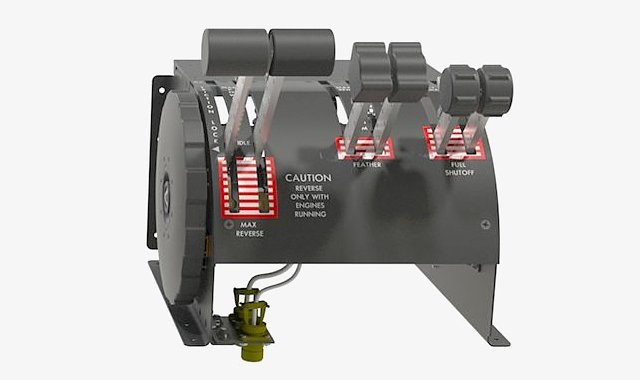
Reliability Takes Flight: Oregon Firm Addresses Critical Control Concerns in Utility Aviation
Following recent incidents, Bend, Oregon-based Kawak Aviation Technologies highlights the importance of robust throttle control systems for agricultural, firefighting, and experimental aircraft, aiming to improve safety in demanding flight operations.
Reliability Takes Flight: Oregon Firm Addresses Critical Control Concerns in Utility Aviation
BEND, OR – October 28, 2025 – In the wake of several aviation incidents, including a recent crash involving a US Air Force OA-1K Skyraider II, Kawak Aviation Technologies Inc. is emphasizing the vital role of reliable flight controls, particularly within the demanding sectors of utility aviation. The Bend, Oregon-based manufacturer, specializing in aviation mission equipment for 30 years, is positioning its advanced throttle quadrants as a key component in enhancing safety for agricultural, firefighting, and experimental aircraft.
Rising Stakes in a Risky Sector
Utility aviation—encompassing crop dusting, aerial firefighting, and experimental flight testing—inherently carries a higher degree of risk compared to commercial passenger travel. These operations often involve low-altitude flying, challenging terrain, and demanding maneuverability. Recent incidents are serving as stark reminders of the potential consequences when critical systems falter. While investigations continue into the causes of these events, a common thread emerges: the need for robust and dependable flight controls.
“The margin for error in these operations is incredibly tight,” explains one aviation safety consultant. “A momentary lapse in control, or a component failure, can quickly escalate into a critical situation. It’s not just about pilot skill; it’s about having equipment you can absolutely rely on.”
The October crash of the OA-1K Skyraider, a modified crop duster used for light attack and reconnaissance missions, brought renewed attention to the potential for engine failure and the importance of responsive controls. Preliminary reports suggest a possible engine issue during a training flight, highlighting the need for reliable systems that can maintain control even in emergency situations. Another recent incident involving a Bell 407 helicopter, where a worn throttle bracket contributed to a loss of engine power, further underscores this point.
Engineering for Reliability: Kawak’s Approach
Kawak Aviation Technologies differentiates itself through a commitment to safety-critical component design and manufacturing. Holding FAA Part-145 Air Repair Station certification, the company focuses on turbine engine conversions and components designed to withstand the stresses of demanding flight operations. Its throttle quadrants feature a proprietary positive-engaging lever gate design, aiming to prevent unintentional movements, coupled with adjustable ‘Powerstop’ technology, designed to limit maximum power output.
“We saw a need for more robust and reliable controls in these specialized sectors,” says a Kawak engineer. “Standard components often aren’t designed to withstand the constant vibrations and stresses of aerial firefighting or the aggressive maneuvers required in agricultural applications. We designed our throttle quadrants to provide a positive and consistent feel, giving the pilot precise control and preventing accidental over-speeding.”
The ‘Powerstop’ technology, which allows pilots to set a maximum power limit, is particularly relevant in agricultural applications, where maintaining precise altitude and airspeed is critical for effective spraying. In aerial firefighting, it can help prevent engine over-speeding during demanding maneuvers and provide a safety margin in turbulent conditions.
Beyond Components: A Holistic View of Safety
While advanced components are undoubtedly important, industry experts emphasize that safety is a holistic endeavor. Regular maintenance, thorough pilot training, and a strong safety culture are all crucial elements. However, the increasing complexity of modern aircraft and the demands of specialized operations are driving the need for more reliable and fault-tolerant systems.
“We're seeing a trend towards incorporating redundancy and automation into aircraft designs,” says an aviation insurance analyst. “But even the most sophisticated systems are only as good as their weakest link. Reliable components, like throttle quadrants, are essential for ensuring the overall safety and dependability of the aircraft.”
Kawak Aviation’s commitment to safety extends beyond its products. The company actively participates in industry events and collaborates with aircraft manufacturers to develop and implement best practices. “We believe that open communication and collaboration are essential for advancing aviation safety,” states a Kawak spokesperson. “We’re committed to working with the industry to develop and implement solutions that will make flying safer for everyone.”
By focusing on safety-critical components and embracing a holistic approach to aviation safety, Kawak Aviation Technologies is positioning itself as a key player in the evolving landscape of utility aviation. As the demand for reliable and robust aircraft continues to grow, the company’s commitment to innovation and safety is likely to play an increasingly important role in ensuring the safety and efficiency of flight operations.
